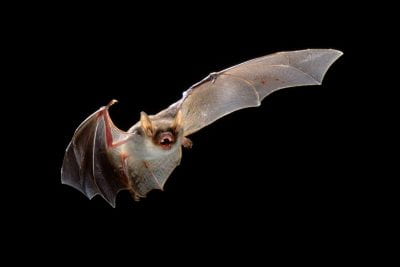Jenny Wong is a senior honors psychology major minoring in marketing and Chinese at the University of Arkansas. She is a member of the Schola Cantorum Choir and works as a junior game designer at Tesseract, the U of A’s game development studio. After college, Jenny hopes to continue learning about user experience design, as well as gain more experience in the realm of psychology and marketing in a design perspective.
Whenever there’s a crisis of any sort people want to find the one blanket statement or scapegoat that accounts for the problem. In the case of COVID-19, many blame the Huanan market in Wuhan, China and see it as the sole perpetrator of the pandemic. What people don’t understand is that there are so many underlying factors that take place when it comes to spillover of wildlife pathogens.To begin with, wet markets have been around for decades, not only in China, but also in Malaysia, Indonesia, Philippines, Singapore, Taiwan, Thailand and Vietnam. They are called “wet” markets because vendors hose down the floors when cleaning. Many are just a place where locals can buy fresh food, such as chicken, fish, and vegetables, at a lower price. Wet markets play a major role in Asian culture, providing income for many families, as well as being more affordable and accessible to citizens. The health concern regarding wet markets apply to those that participate in exotic wildlife selling and trade.
Zoonotic pathogens are pathogens that are naturally transmitted between animals and humans. Locations that have a high level of biodiversity are at a much higher risk for spillover of zoonotic pathogens. The Huanan market sold a variety of exotic animals that were tightly packed among hundreds of people, which makes this a high-risk environment for the spread of zoonotic diseases. On paper, we can see how a virus could spread due to these conditions, but there are some less obvious factors that also influence zoonotic transmission.

Bats help with pollination, seed germination, and controlling insect populations. They also carry pathogens that can spillover into humans.
I was surprised to learn that many causes of zoonotic transmission stem mainly from habitat loss and fragmentation. Destroying the habitats of animals and depleting their natural resources forces them to seek new homes that have the resources they need – the closest being cities and towns where people and domestic wildlife live. Here’s an example: a farmer decides to deforest an area of trees to set up a pig farm. When cutting down the trees, he realizes he could plant some fruit trees and sell the fruit to make some extra cash. What he doesn’t realize: The fruit bats that lost their homes due to the deforestation are now settling in the fruit trees near the pig farm. The bats eat the fruit and defecate in the pig’s food, the pig eats it, and we eat the pig. This is a specific scenario, but not one that is unlikely, especially in a world with such diverse cultures. The chain is mindboggling, no?
Environment is a key factor now as it was in the middle ages.
Just as there is not one factor that causes a spillover of wildlife pathogens, there is not just one answer that can solve it. Eradicating an entire species, such as the bat, is unrealistic as well as harmful to the environment. Eradicating wet markets would be a huge blow to those partaking in the business and greatly impact urban food security. Who am I to tell a farmer in rural Kenya to not do something that provides for their family? We need to understand this from a lot of different angles, and having a Westerner saying, “hey, don’t do this,” is not the answer. What is needed is more knowledge about the situation and incorporating it to not just business practices, but also our daily lives. It’s important to not mess with animals and their environment. If the habitat is messed with, make sure there is a prepared location where these animals can go that ensures safety to them and humans. There are so many other factors that affected the spread of COVID-19 that I don’t even know about, so if anything, I want you to leave with the importance of perspective in mind. No one species, person or culture should take the blame for this virus. Pointing fingers will not help and only divide us more, so I urge everyone to take the time to understand and assess the situation before jumping to conclusions.

